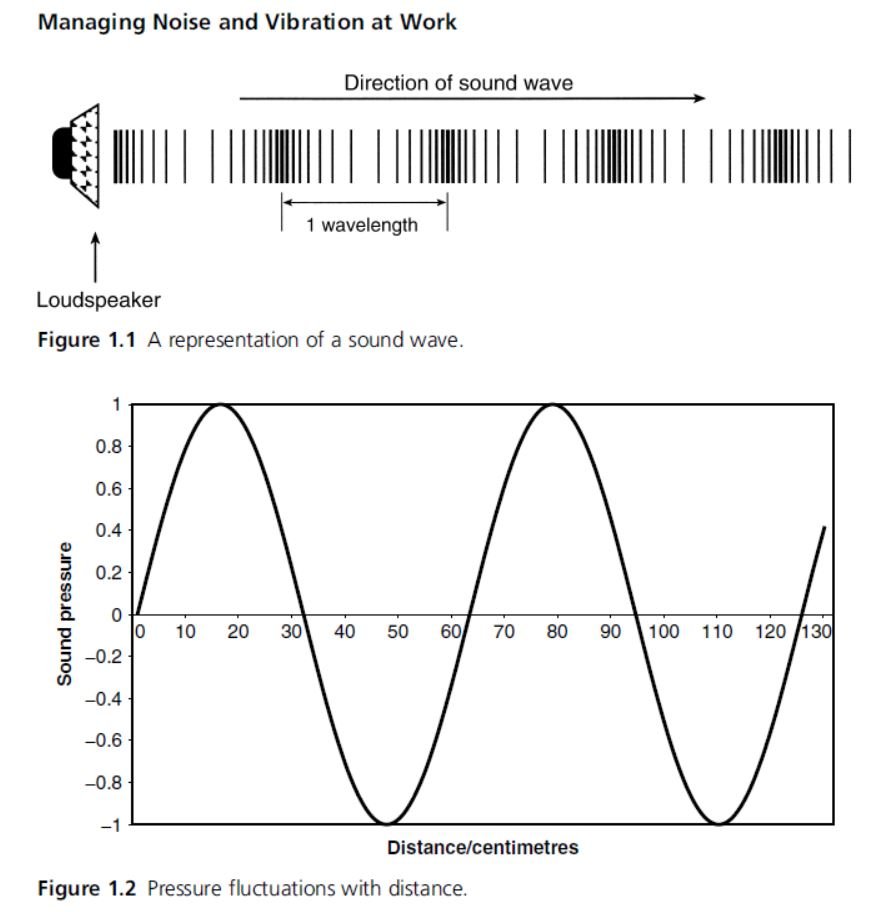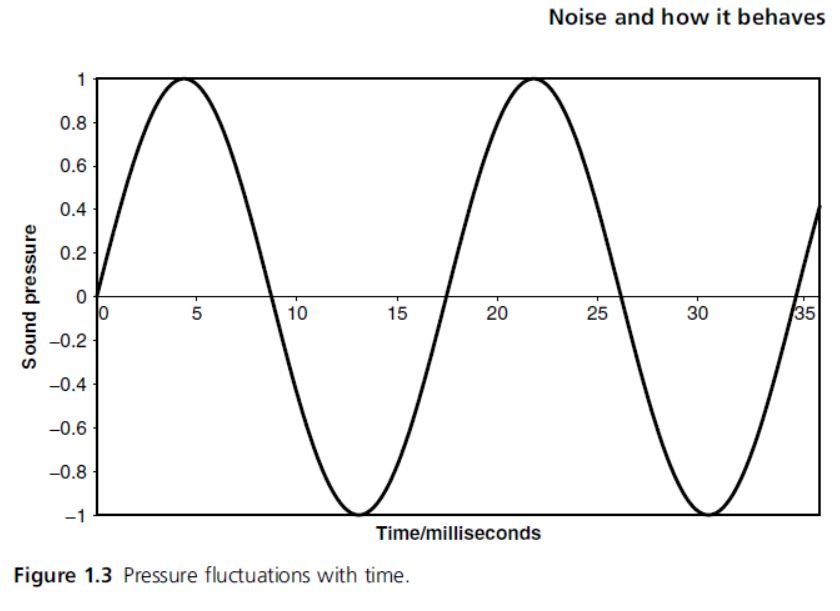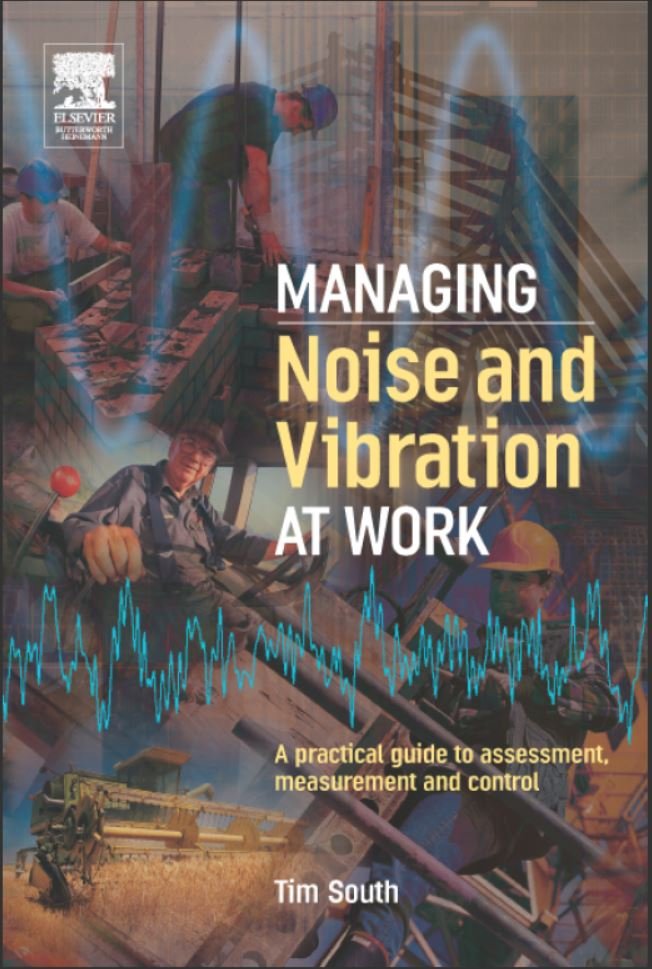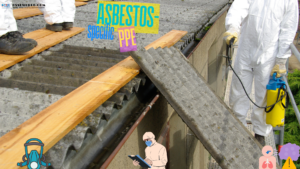E-Books:Managing Noise and Vibration at Work
3 min readA practical guide to assessment, measurement and control
What is noise?
Sound arises when fluctuations in air pressure give rise to pressure waves which travel through the atmosphere. As they travel they will interact in various ways with their surroundings. Noise is a word which is normally applied to unwanted sound, and the sound present in most work situations is unwanted, so we normally talk about exposure to workplace noise rather than to workplace sound.
Mathematical descriptions of how sound behaves as it interacts with solid objects can be very complicated. Fortunately it is possible to produce full descriptions of the behaviour of sound in simple, idealized situations, and to use these to build up to more realistic situations. The simplest type of sound wave would be a pure tone – a sine wave– moving in one direction without spreading out as it moves away from the source.
If you could take a snapshot of the pressure variations along the direction it was moving in, you would get a picture such as the one in Figure 1.1.
This is rather difficult to draw, so it is normally easier to show the pressure variations as a graph of pressure against distance. It should be remembered when this is done, though, that sound is a longitudinal wave. In other words the air movements as the wave progresses are backwards and forwards in the same direction as the wave as a whole is travelling. This is different from a transverse wave such as a series of ripples on a water surface, in which case the water is moving up and down while the wave travels horizontally (Figure 1.2). If you could stand at one point as the sound wave travelled towards you, and plot the pressure as a function of time, you would also get a sinusoidal shape (Figure 1.3).
This is assuming you could work very fast; the pressure might be varying up and down several thousand times a second! Even for quite loud sounds, the actual pressure change is rather small. A 1 per cent fluctuation in atmospheric pressure would be associated with an intolerably loud sound. By comparison, the atmospheric pressure can easily change by 2–3 per cent in the course of an ordinary week’s weather. When we measure the magnitude of a sound wave, therefore, we concentrate on the deviations from ambient air pressure, and this deviation is normally called the sound pressure.


Pure tones, sine waves, frequency and wavelength
The sound wave described above will have a particular frequency. Essentially, the frequency of a wave is the number of complete waves which pass any particular point in the course of one second. The unit of frequency is the Hertz. If the frequency is 1000 Hz (i.e. 1 kHz), then 1000 complete waves will arrive in one second. The frequency of a pure tone such as this is very closely related to its apparent pitch; a high pitched sound has a high frequency, while a low pitched tone will have a low frequency. The range of tones which are normally considered to be audible to human beings ranges from 20 to 20 000 Hz (or 20 kHz). To complete Reading Download the E-Book Below


Table of Contents
Preface vii
Acknowledgements x
Part I Noise 1
1 Noise and how it behaves 3
2 Human response to noise 18
3 Measuring noise 31
4 Development of workplace noise control in the UK 53
5 Calculating noise doses and limits 61
6 Assessment of noise exposure 73
Part II Hand–arm vibration 87
7 Fundamentals of vibration 89
8 Hand–arm vibration syndrome 96
9 Vibration measurement 104
10 The development of legal controls on hand–arm vibration exposure 114
11 Calculating hand–arm vibration doses and limits 119
12 Assessment of hand–arm vibration exposure 127
Part III Whole body vibration 147
13 Controls on whole body vibration 149
14 Measurement and assessment of WBV exposure 157
Part IV Reducing noise and vibration risks 169
15 Managing controls on noise and vibration exposure 171
16 Noise control 183
17 Hearing protection 199
18 Reducing hand–arm vibration risks 224
19 Controlling whole body vibration exposure 232
Appendix A Frequency weighting values 241
Appendix B Action levels and duties 243
Appendix C Glossary of symbols and abbreviations 248
Appendix D Further calculation examples and answers 253
Bibliography 258
Index 263





1 thought on “E-Books:Managing Noise and Vibration at Work”